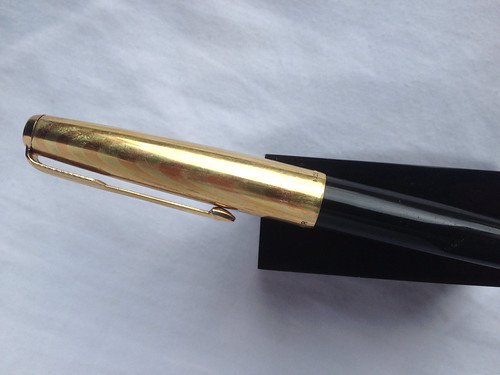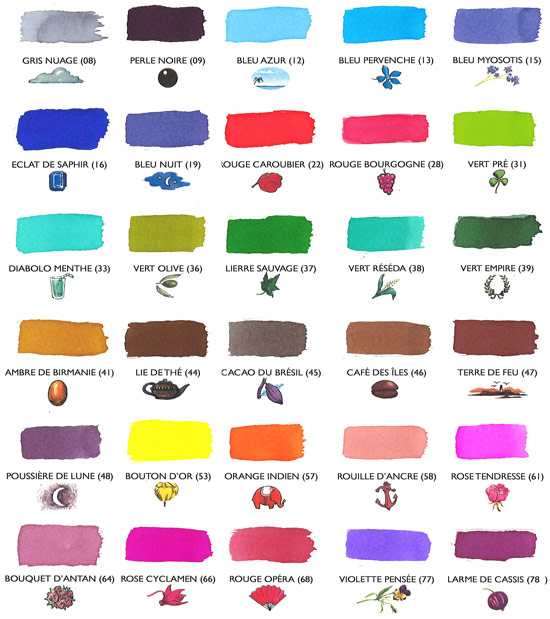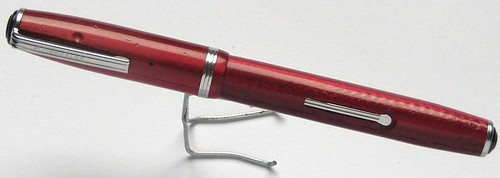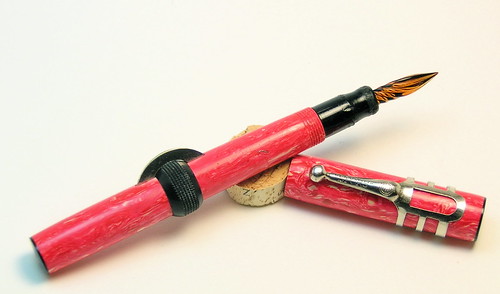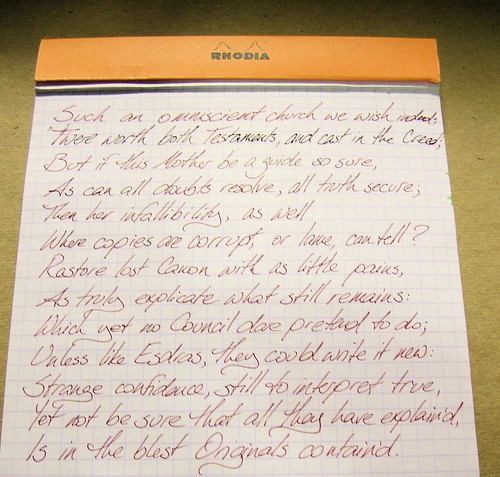Although I mostly attend to Sheaffer fountain pens — that is, among the sorts of pen I can afford, Sheaffer pens interest me most — they’re relatively less common here in England than they were in the US, and Parker pens are more common, so if I encounter a pen in the wild (or browse generally on ebay), I’m more likely to see a Parker. Parker manufactured fine writing instruments — Sheaffer just produced pens that, on the whole, I appreciate more, and appear on the English market less often.
So a couple of months ago, I stopped in at a local vintage clothing shop and scanned their counter full of antique odds and ends, and saw there a handsome Parker 61 with the Rainbow Gold cap.
I usually prefer to buy pens from non-specialists only if the price is low enough that I can rationalise the risk; one can never be quite sure what has happened inside a pen over long years. This pen sold for a price close to (but still below) its specialist value, and I hadn’t had a treat in a while, so Margaret and I agreed that this would be a reasonable special occasion.
This was not the capillary-filler style of Parker 61, but the later squeeze filler. The nib looks fine, and the trademark inset arrow of the Parker 61 is still there (I have a Parker 61 Flighter whose arrow has, alas, fallen away).
All in all, it makes a very handsome, highly functional addition to the Parker Wing of my collection.
Granted that I would be more likely to find Parkers than Sheaffers, I had resolved to look out for one of the striking Parker 50 Falcons, one of the pen models with the nib integrated into the body of the pen. The most famous of this sort, the prize example, is the Pilot Myu/Murex; Parker had made a similar pen out of titanium, but the materials costs were too high, and the nibs too brittle (if I recall correctly). The Falcon preserved the intriguing style of the integrated nib with more conventional materials, and Parker manufactured them in four models for several years.
I’d been looking out for a Falcon, and had had my eye on two at £48, which was more than I could afford but a low-ish price, I thought. I mentioned them to a dealer-collector one day, and the next time I looked for them online they were gone (this is probably just a coincidence, but if I meet that gentleman again I may ask him about them). I recently put in a low bid on a Falcon on ebay, though, and to my surprise won the auction.
From the outside, it looks mostly like any other metal-plated fountain pen. It’s a pleasant design, but nothing startling. The integrated nib, though, stands out in the pen-design crowd:
The nib is very firm, but it writes smoothly and agreeably. This pen probably came at a discount because of the friction marks where the cap grips the section, but I don’t mind; I’m mostly a writer-collector anyway, and I’m more curious to experience working with a pen than seeking out a perfect specimen. (Not that I turn perfect specimens away.)
I still feel a stronger attachment to Sheaffers, but these Parkers have impressed me very favourably. The hooded nib of the 61 and the integral nib of the 50 both write very smoothly; the pens are attractive, and they lie comfortably in my hand. If I see another, I may succumb to temptation.




